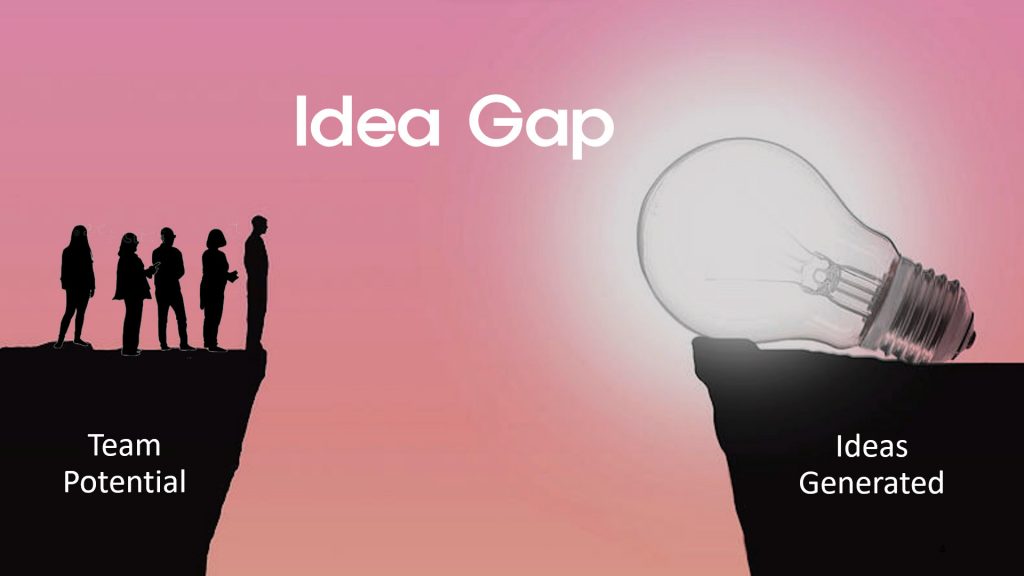Filling the Idea Gap

I am sure you have heard the old axiom “there is no such thing as a bad idea” regarding brainstorming. Well folks, after facilitating over one-thousand brainstorming sessions, I am here to tell you there are bad ideas. I also believe there does not need to be.
The reality is this: brainstorming is a powerful business tool that is abused and mismanaged. Recent articles written in business publications including Inc. and Harvard Business Review have tainted brainstorming as a waste of time. In many respects, those articles are right. However, in one respect, they are very wrong: businesses need ideas to thrive.
Ideas Are the Lifeblood of Business
Today’s successful businesses run on ideas. Ideas are critical to get a business to the next level. They affect product development, marketing, operations, culture, and on and on. In most cases, the best people to generate these ideas are the people already employed at the company.
I recently talked with someone from a product development team. When I mentioned brainstorming, his eyes rolled back, and he exhaled in disgust. Then he said, “You mean get the sticky notes and brown paper, get in a room with the team, and spend hours generating hundreds of random ideas? Then God help us, try to find a gem amongst the sticky notes? Yeah, no thank you.”
The reality for many companies is reflected in this person’s comment. They believe brainstorming does not require skill or expertise. Just throw people in a room with a flip chart or sticky notes, and then POOF! Magic happens. Yeah, not so much.
What is the Idea Gap?
This belief in brainstorming magic leads to an idea gap. The idea gap is the gap between the potential of the brainstorming team and the ideas generated.
The idea gap impacts a business in two ways. The first is the resources expended to generate ideas. You can argue that the cost may be minimal – a few hours of a team’s time. However, it is more than time: it impacts team enthusiasm and employee satisfaction.
The second business impact is a lost opportunity. The team normally brainstorms on a goal to improve business. If ideas are not generated to achieve the goal, then the opportunity is not realized – the business does not move forward.
Filling the Idea Gap
Brainstorming with Da Vinci is designed to fill the idea gap. The Da Vinci approach includes proven methods to do the following:
- Choreograph Success: Methods guide you through setting a measurable goal, choreographing participation, and session organization.
- Inspire the Team: Methods designed to get participants energized and think from different perspectives to achieve the session goal.
- Next Level Ideas: Methods designed to engage all participants in generating ideas, shake up their thinking, and build on each other’s ideas.
- Make Ideas Actionable: Methods prompt the team to layer in complexity and test ideas to ensure they are actionable.
Click here to read more about the Da Vinci Approach.
